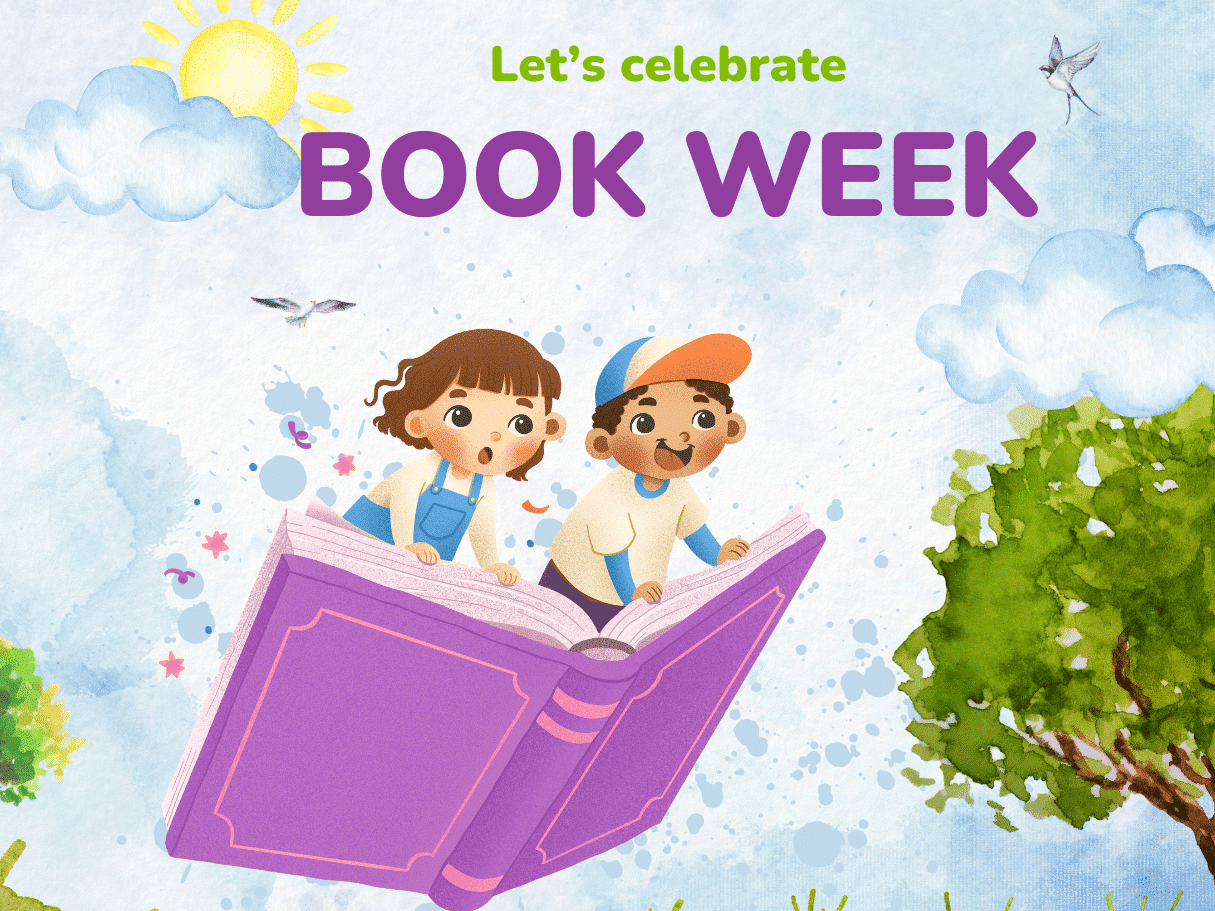Celebrating Book Week 2025 and the joy of shared stories
There’s something magical about getting lost in a good book. The way stories transport us to new worlds, introduce us to fascinating characters, and spark our imagination is truly special. For families on an AAC journey, books offer even more – they’re powerful tools for creating connections, building language, and making communication come alive.
For Book Week 2025, as we celebrate the theme “Book An Adventure,” we want to share why reading together can be one of the most rewarding parts of your communication journey.

Why Books and AAC Make Perfect Partners
Reading isn’t just about the words on the page – it’s about the entire experience of sharing stories together. When you combine books with AAC, you can create rich opportunities for communication that feel natural and enjoyable.
Books provide context for communication.
Stories give us something meaningful to communicate about. Instead of practicing isolated words, children can use their communication tools to discuss characters, predict what happens next, or share their favourite parts. The story becomes the reason to communicate.
Reading builds vocabulary naturally.
Every book introduces new words (and concepts) in context. When children encounter these words in stories, they’re more likely to remember and use them in their own communication. Plus, seeing how language works in books helps develop understanding of how to put words together.
Stories create emotional connections.
The feelings that stories evoke – excitement, curiosity, empathy – give children reasons to express themselves. These emotional moments often lead to the most meaningful communication.
Simple Ways to Make Reading More Interactive
You don’t need special books or complex strategies to make reading work beautifully with AAC.
We understand that literacy, and complex thoughts/sentences can feel overwhelming and difficult to understand/process for some children. Remember that it’s always okay to keep it simple – focus on key words, keep sentences short/simple, model without expectation of the child taking their turn, etc. The goal is to keep it fun!
Here are some gentle approaches that any family can try:
- Give everyone a voice in the story. Take turns “reading” or engaging, using a communication device to contribute a word or comment about the pictures. Every contribution matters and keeps everyone engaged.
- Model language as you go. Point to words on the device that match what’s happening in the story. This shows how the communication tool connects to the story and gives an example of how to use it.
- Make predictions together. Before turning the page, pause and talk about what might happen next. This creates an opportunity for practicing language like “I think…” or “maybe…” and gets everyone involved in the story.
- Talk about feelings and favourites. Stories are full of emotions and opinions waiting to be explored. Ask open-ended questions like “How do you think the character feels?” or “What’s your favourite part so far?” It helps to model some answers first like “I think this character feels…” “My favourite part so far is…”
- Let the child lead sometimes. Follow their interests and communication attempts. If they want to talk about the pictures rather than follow the story exactly, that’s perfectly fine. Communication is more important than getting through every word – and any mode of communication is valid here! Whether it’s a simple touch, point or body movement, or its a vocalised sound – every connection is a valuable way to engage with the story.
Creating Your Own Reading Adventures
Here are our top tips for your AAC Reading adventure:
- Start with books your child already loves. Familiar stories feel safe and comfortable, making it easier to focus on communication rather than trying to follow a new plot.
- Choose books with repetitive language. Stories with recurring phrases or predictable patterns give children multiple chances to join in. These moments of participation can build confidence and success. You can also build this into book navigation like saying ‘turn’ for ‘turn the page’, or ‘more’ for the next page, or ‘go’ for doing actions to go with the story, etc.
- Don’t worry about finishing every book. Some days you might spend the whole time talking about the cover or the first page. That’s valuable communication time too.
- Make it comfortable or cozy. Reading should feel special. Create a comfortable space where everyone can see the book and access communication tools easily.
- Follow your child’s energy and interest. Some days might be perfect for longer stories, other days just looking at pictures and chatting works better. Go with what feels right.
Building Language Through Stories
Reading together naturally supports language development in ways that feel effortless and enjoyable. Children learn new vocabulary, see how sentences work, and discover different ways to express ideas – all while having fun with a good story.
When you’re reading together, children are shown that their communication matters – that their thoughts and opinions are valued. It demonstrates that communication tools aren’t just for requesting things or answering questions – they’re for sharing ideas, expressing feelings, and connecting with others!
Remember: Your reading adventure doesn’t have to look like anyone else’s. Whether you’re just starting to explore AAC or you’ve been on this journey for a while, books can meet you wherever you are and help take your communication to new places.
So, grab a favourite book, get comfortable, and see where the story takes you.
The adventure is just beginning.
Want more tips for making communication come alive in everyday activities? Contact our team to book a 1:1 consultation, take a look at local training events and workshops near you, or explore our range of AAC solutions designed to grow with your communication journey.
